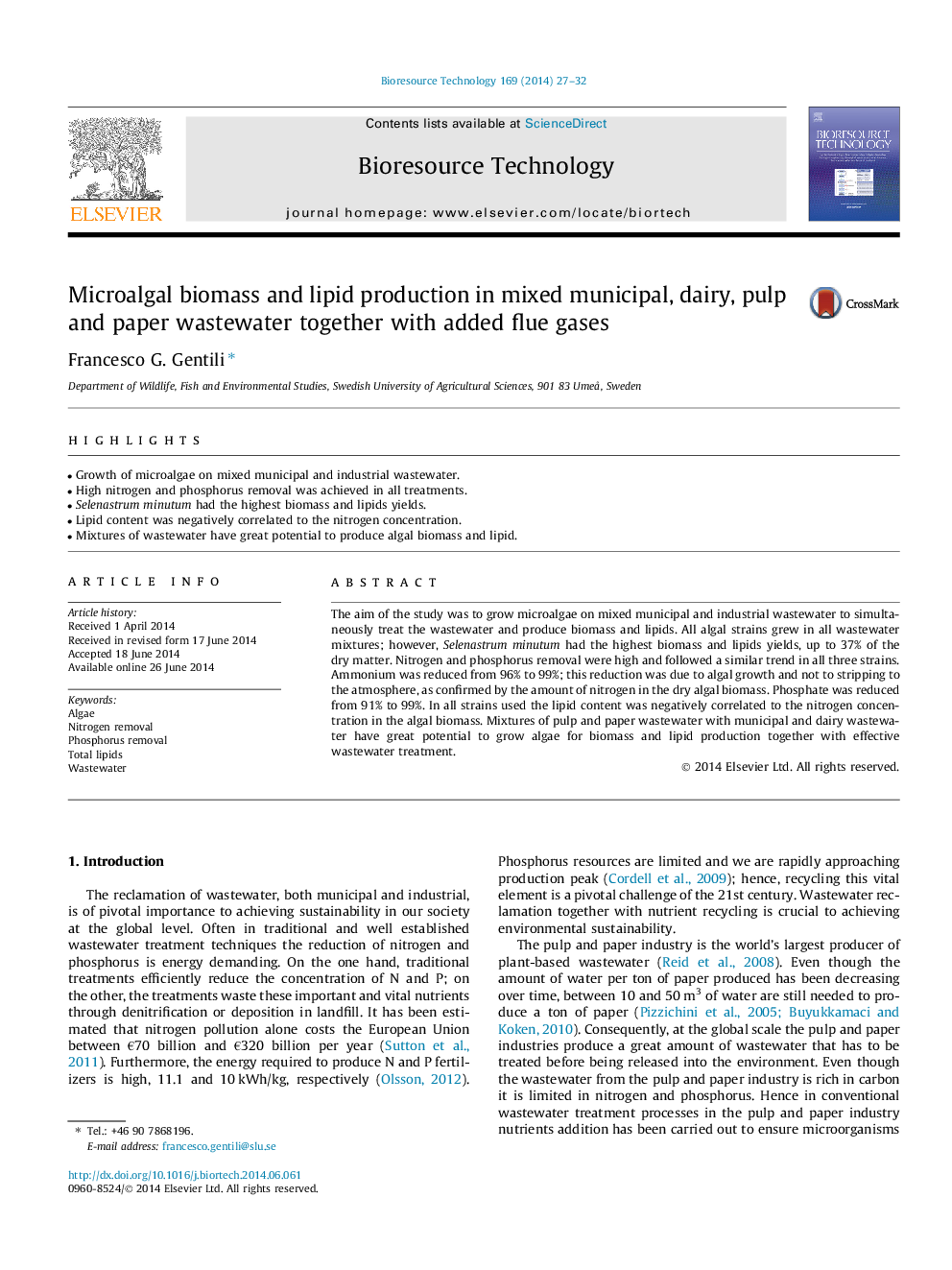| Article ID | Journal | Published Year | Pages | File Type |
|---|---|---|---|---|
| 680665 | Bioresource Technology | 2014 | 6 Pages |
•Growth of microalgae on mixed municipal and industrial wastewater.•High nitrogen and phosphorus removal was achieved in all treatments.•Selenastrum minutum had the highest biomass and lipids yields.•Lipid content was negatively correlated to the nitrogen concentration.•Mixtures of wastewater have great potential to produce algal biomass and lipid.
The aim of the study was to grow microalgae on mixed municipal and industrial wastewater to simultaneously treat the wastewater and produce biomass and lipids. All algal strains grew in all wastewater mixtures; however, Selenastrum minutum had the highest biomass and lipids yields, up to 37% of the dry matter. Nitrogen and phosphorus removal were high and followed a similar trend in all three strains. Ammonium was reduced from 96% to 99%; this reduction was due to algal growth and not to stripping to the atmosphere, as confirmed by the amount of nitrogen in the dry algal biomass. Phosphate was reduced from 91% to 99%. In all strains used the lipid content was negatively correlated to the nitrogen concentration in the algal biomass. Mixtures of pulp and paper wastewater with municipal and dairy wastewater have great potential to grow algae for biomass and lipid production together with effective wastewater treatment.
